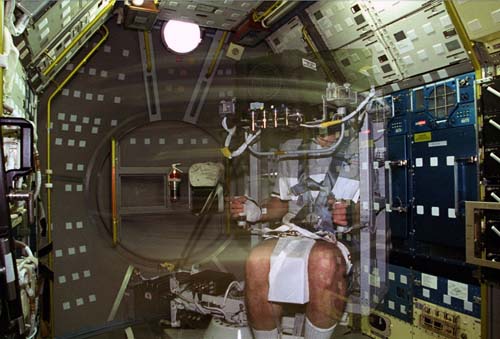In collaboration with HAL, the Neurolab shuttle mission (STS-90) was launched on a 16-day flight, dedicated to neuroscience research (in particular the effects of microgravity exposure on the nervous system). Included in the Spacelab module carried in Columbia’s payload bay was a short-arm human centrifuge capable of generating 1-g of centripetal acceleration along the interaural or dorsoventral head axes; in effect, our experiments were the first application of ‘artificial gravity’ in manned spaceflight.
 The four payload crewmembers were exposed to centrifugation before, during and after flight, and binocular eye movements were measured. The response of the otoliths, the portion of the peripheral vestibular (balance) system that measures linear acceleration (and gravity), was determined from reflex eye movements (vestibulo-ocular reflex). Results from previous missions suggested that the otolith-ocular response was muted after spaceflight. Our results showed no change in these reflexes during or after flight. One possibility is that intermittent exposure to artificial gravity may have acted to maintain otolith reflexes.
The four payload crewmembers were exposed to centrifugation before, during and after flight, and binocular eye movements were measured. The response of the otoliths, the portion of the peripheral vestibular (balance) system that measures linear acceleration (and gravity), was determined from reflex eye movements (vestibulo-ocular reflex). Results from previous missions suggested that the otolith-ocular response was muted after spaceflight. Our results showed no change in these reflexes during or after flight. One possibility is that intermittent exposure to artificial gravity may have acted to maintain otolith reflexes.
Results from the Neurolab experiments are included in the Publications section (HAL website).
This research was supported by NASA grants NAS 9-19441 (B. Cohen PI, S. Moore Co-I) and NCC 9-128 (S. Moore PI).
Contact person for this study: Dr Hamish MacDougall
